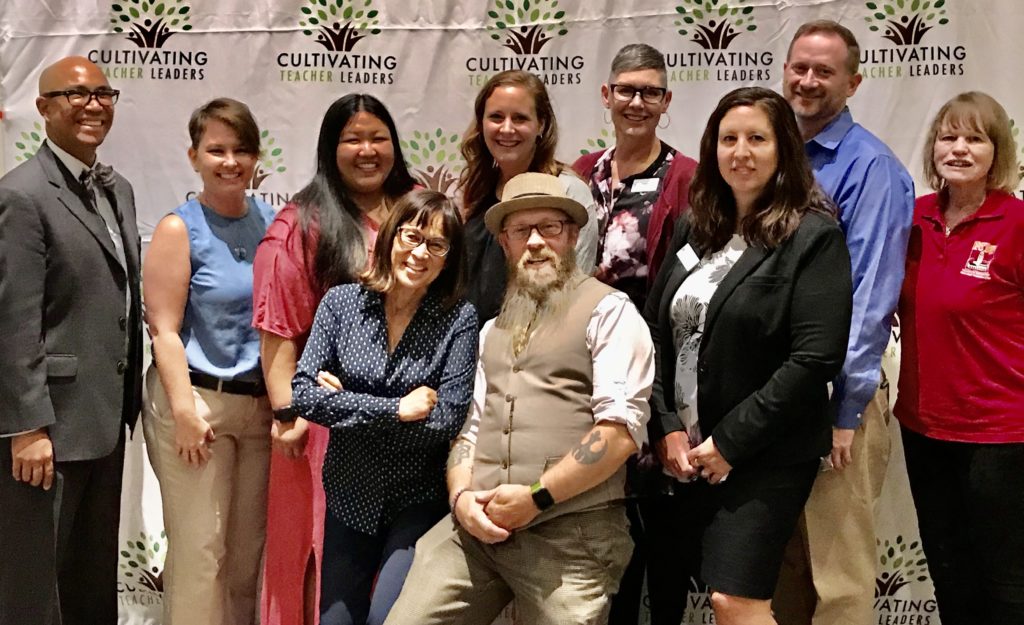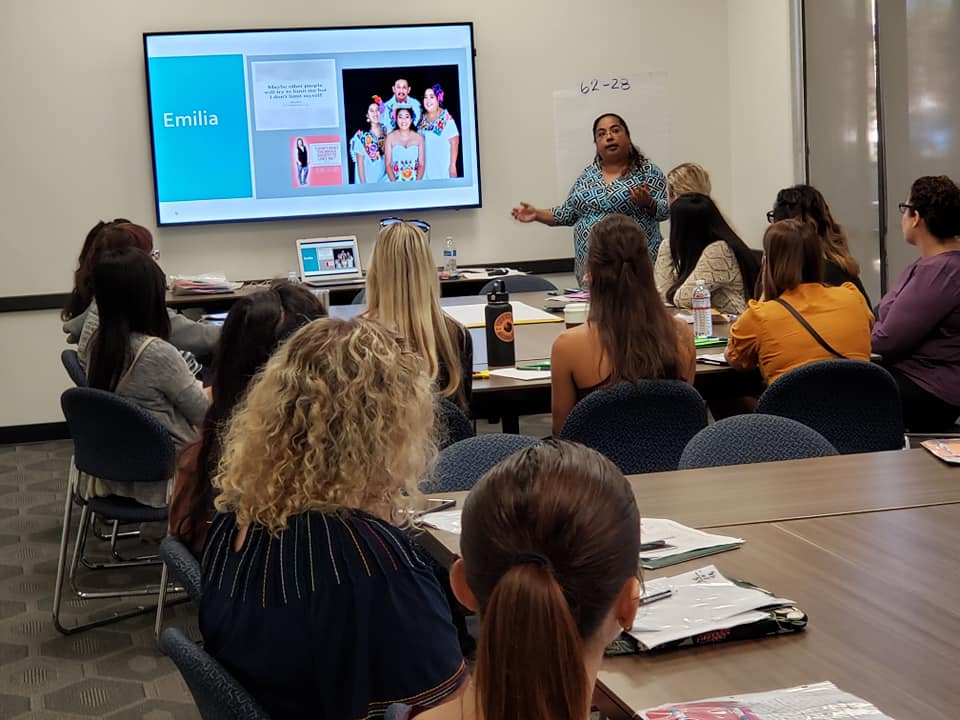
AL RABANERA is a little busy. The high school math teacher and Fullerton Secondary Teachers Organization (FSTO) member has a 6-month-old baby at home while still working full time in his classroom. Not only that, he and his North Orange County colleagues have spent the past four years building a thriving teacher professional network.
With a goal of strengthening and diversifying the profession, they have grown the network out of the teachers-teaching- teachers model supported by CTA’s Instructional Leadership Corps (ILC). Rabanera says he and other ILC teacher leaders felt strongly that educators knew best about educator needs. “We said, ‘If we really want to take back the profession, what are we going to do? Let’s put action to those words.’”
Their network, called Cultivating Teacher Leaders (CTL), now offers regular conferences and workshops for experienced educators, and mentoring programs for new teachers and those aspiring to be teachers in college and high school. Using FSTO as a base, the network has forged key partnerships with CSU Fullerton’s College of Education, as well as with community organizations and businesses. It has secured funding from, among others, NEA, which awarded an initial grant of $250,000 that was followed by a grant of $500,000 earlier this year.
“ WE SAID, ‘IF WE REALLY WANT TO TAKE BACK THE PROFESSION, WHAT ARE WE GOING TO DO? LET’S PUT ACTION TO THOSE WORDS.’”
— Al Rabanera, Fullerton Secondary Teachers Organization
The result, according to an October 2019 report from the Learning Policy Institute (LPI), is that Cultivating Teacher Leaders is “making significant contributions to the profession along its continuum [and is in essence] striving to build and to widen a pipeline for professionals — from potential to aspiring, emerging, professional, accomplished, and finally, teacher leader.”
The network is one of the major successes of ILC, the multiyear, statewide initiative that has teachers training teachers in instructional shifts in new state standards, providing opportunities for professional development and leadership.
ILC benefits educators and students

ILC, a partnership of CTA, the Stanford Center for Opportunity Policy in Education and the National Board Resource Center at Stanford University, was formed after California shifted to the Common Core State Standards and new assessments in 2014. (ILC now also addresses the Next Generation Science Standards.) It is, as LPI president and president of the California State Board of Education Linda Darling-Hammond says, changing the paradigm for teacher learning. Instead of outside consultants who parachute in to conduct one-time workshops, ILC taps into the expertise and experience of local educators who lead ongoing professional development for their peers.
“Through ILC, CTA is helping teachers acquire the skills they need to give students a quality education,” says CTA President E. Toby Boyd. “ILC also allows trainers to gain valuable leadership experience. It’s is a win for students and educators at all levels.”
Since its inception, ILC teacher leaders have provided ongoing professional learning to more than 32,000 educators statewide (see sidebar). As documented in the LPI report, educators’ responses to ILC conferences and training have been overwhelmingly positive, with many participants identifying this as the best professional learning experience they have had.
Building the teacher pipeline
Fliers for a CTL event Sept. 21 enticed educators and aspiring educators: “Do you need new ideas to implement in your classroom? Come join us for a morning of empowerment as we work together to build our professional capital!”
This was the 10th event presented by CTL; sessions ranged from “Got Cardboard 2.0? Design Thinking & PBL” to a workshop for those interested in becoming National Board Certified Teachers.
While CTL’s partnerships allowed the event to take place at CSU Fullerton’s Center for Careers in Teaching, its professional development workshops have also taken place at CTA chapter offices. Karin Barone, teacher leader and member of Orange Unified Education Association, says in the LPI report that running trainings through the union had a dual purpose: “to get teachers to understand that your fellow colleagues have skills and expertise in an area that they can train you in … [and] to help them see the union is [about] more than just bargaining your contract; there’s more to offer and more support that we can give you than just that. That was important to me.”
Educators from Southern and Central California have attended CTL events.
The latest NEA grant is allowing CTL to expand on the ILC mission to address not only California’s teacher shortage, but the shortage of teachers of color and the high number of educators who leave the profession within the first few years of teaching.
Specifically, CTL is tailoring its work to recruit and retain a diverse population of:
- Potential educators in high school.
- Aspiring educators in college.
- ESPs and paraprofessionals interested in becoming teachers.
- Early-career educators.
To date, some 170 high schoolers and college students have participated in CTL’s mentorship programs, which offer, for example, monthly local member-led workshops on best teaching practices and relationship-building with community partners, nonprofits and colleges/ universities. CTL is also creating a 50-member union-led “new educator cohort.” The group will assist new members in their first challenging years in the classroom by helping strengthen their skills and providing meaningful training to improve their professional practice. And CTL is collaborating with CTA’s Institute for Teaching on a social justice curriculum for early career educators.
The teachers-teaching-teachers model is spreading, says Rabanera, pointing to how ILC colleagues Angela Der Ramos, Alisal Teachers Association, and Colleen Maroney, San Bernardino Teachers Association, are already conducting their own events and workshops.
He’s excited by the big picture all these various facets will present. “With these components we’ll be able to track between educational ecosystems as students and educators move through them. We’ll be able to use the data to say if these programs are effective, durable and sustainable.
“It’s helping the next set of future educators who will become our colleagues.”
The Reach of the Instructional Leadership Corps
Since ILC’s inception in 2014:
- Teacher leaders have provided multisession professional learning to more than 32,000 educators in more than 2,000 schools in California.
- An additional 30,000 educators participated in ILC-related conferences and presentations.
- 38,000 more were indirectly impacted as ILC members trained instructional coaches in a trainer-of-trainers model.
To read the full Learning Policy Institute report, “The Instructional Leadership Corps: Teachers Leading Sustainable Professional Learning in Their Communities,” go to learningpolicyinstitute.org.
The Discussion 0 comments Post a Comment